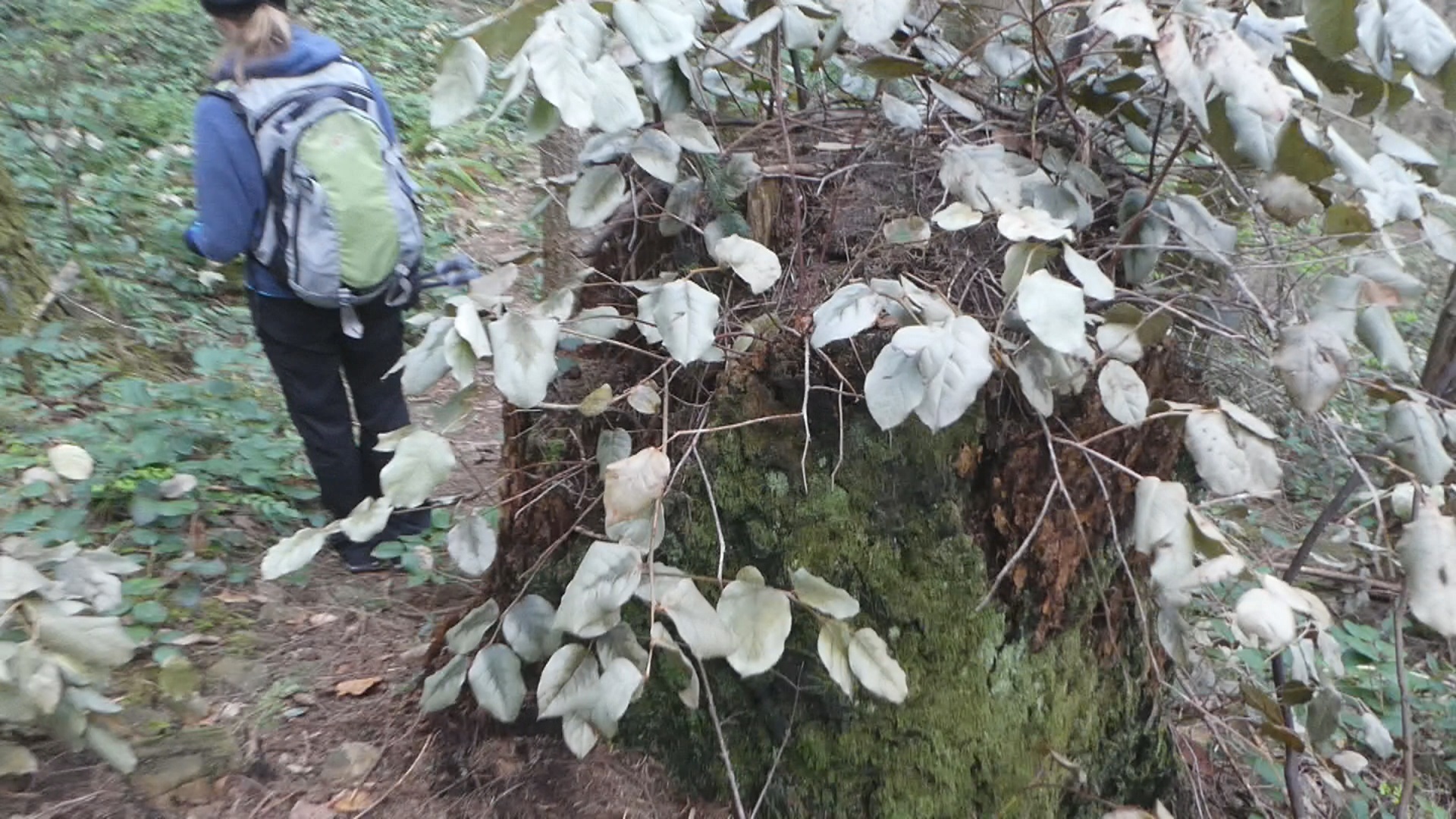VANCOUVER ISLAND, B.C. – Catherine Temple believes that she is seeing a natural disaster unfold before her eyes.
Temple, who runs the Facebook page Go Hiking Vancouver Island, said salal plants are dying across the coast, and she warns that the implications could be far reaching.
She is sounding the alarm after seeing huge swaths of dead or dying plants during her hikes.
“Some people are saying that it’s just the dry weather,” she said. “No, I don’t agree with (them), because even along the lines of the beaches and the lakes and the streams, they’re the first ones to go. They’re really dead. So it’s everywhere.”
Salal is a staple for the deer population during the winter months, according to Temple.
“So we’re going to see deer coming into town for food,” she added. “That’s my way of looking at it, anyway. This isn’t a small thing. This is happening from Port Renfrew right up to Port Hardy, as well as I’ve heard from people on Salt Spring Island, in from Powell River, from Washington State, Quadra Island… it’s everywhere.”
Temple said it’s pretty easy to tell when a salal plant is dying: “They start to change colour. It goes lighter, and lighter, and lighter. Go into some place like Beaver Lodge here in Campbell River and it’s dead. It’s totally gone.”
Richard Hamelin, a professor of forest pathology at UBC’s Faculty of Forestry is also concerned about the hardy plant withering away and dying.
He told CBC News’ The Early Edition that “”The leading cause that we’re thinking of is the unusual weather events and that would be sort of a sneak preview of what climate change might do to our forests and our ecosystems.”
Temple said she first noticed the problem during a hike at Mohun Lake in Campbell River.
“And then we took a hike up at Goose Lake, and we started noticing it there, as well,” she said.
Later, during a trek around the back end of Menzies Mountain in Campbell River, she noticed a whole side hill had either dead or dying salal plants.
“That was huge,” she said. “That’s the one that I actually posted on Facebook because it was everywhere.”
The next weekend, during a hike on the Campbell River Lookout Trail, she saw more dead or dying plants.
She theorized that a weather anomaly, with huge swings below and above freezing within a couple of days, could have had a hand in killing the plants.
“The roots are very, very shallow, so it can take a certain amount (of temperature changes) but it can’t take that over and over again,” Temple said. “And because it’s so prevalent, it can’t be a bug, because it wouldn’t be on the islands, but it is.”
Temple said this is “our canary in the coalmine,” adding that salal plants provides a vapor barrier for all the mushrooms, mycelium, and fungus below them.
“So if that’s all dead, then first of all, you’ve got the requiem for a massive fire because I don’t think they’d (firefighters) ever be able to go out and put out a fire that’s in dead salal,” she said. “The other end of it, what happens to the mushrooms? If it’s got dead salal on top of it, that’s what covers the mushrooms and keeps the moisture in. The mushroom goes, the mycelium goes, and so does the fungus. The fungus goes, the forest goes.”



